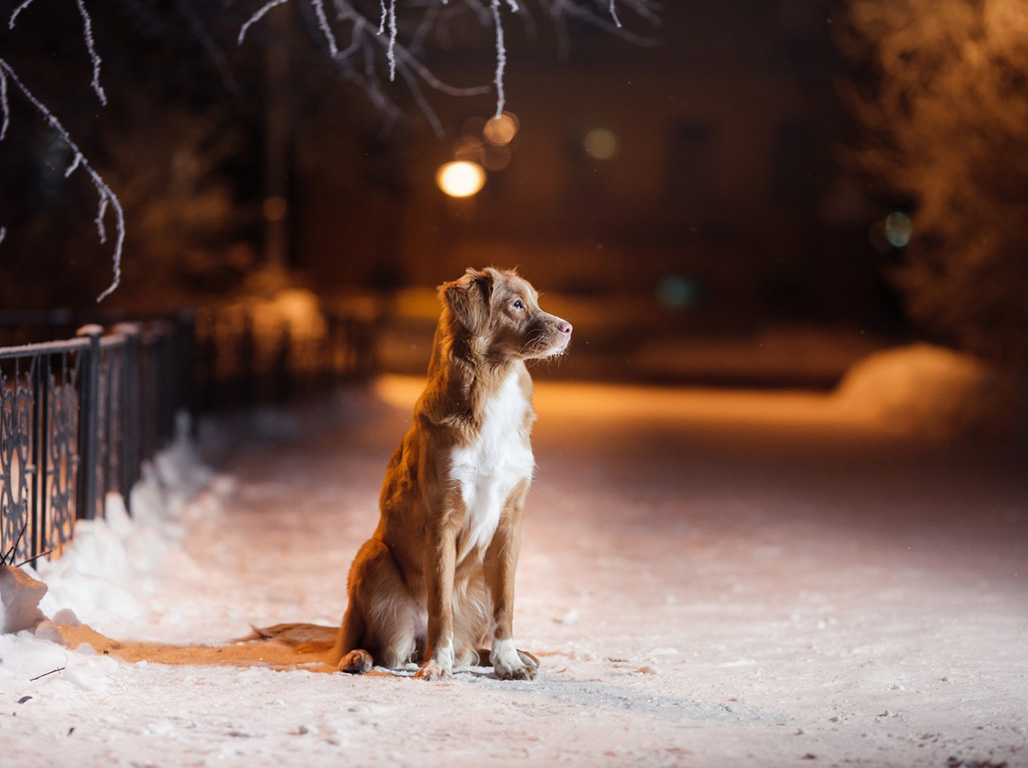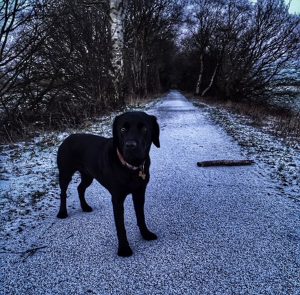
Summer is behind us, and we’ll soon be walking our dogs in the gloomy mornings and evenings of autumn. But those strolls can come with a few challenges....
Visibility is a major concern for many dog owners heading out in the autumn and winter darkness. It can be more difficult for drivers to see you, and let’s face it, walking at night can sometimes be frightening for both us and our dogs.
So to help keep you and your dog safe on evening and morning walks, here are our top tips as those longer nights draw in.
Wear reflective gear:
Ensure people can see you and your dog at all times. Improving your visibility will not only allow drivers to see you better, but you’ll be able to keep track of your dog if you let them off lead. Reflective gear could also prevent your dog from becoming lost if they sometimes break free from their harness or collar.
To keep yourself visible, avoid dark colours and consider wearing a reflective vest. For your pooch, you can use a reflective collar, lead, or a clip-on doggy light.
Keep your dog on the inside:
When walking your dog along busy roads, keep them on the opposite side of the curb. Some dogs are easily distracted by vehicles, passing bikes or cats hiding under parked cars. By walking them away from the curb you’ll have more time to regain control if they lunge or launch themselves into the road.
Carry your phone:
Phones can be extremely useful in emergency situations. If you do get lost you can open a map on your phone to get yourself back to safety. If your dog has an accident you can ring the emergency vet or book a taxi to pick you up. Your phone can also be used as a light source if you do find yourself in a poorly lit area. A smartphone is a must-have for every night time walk.
Stick to familiar and well-lit areas:
A night time walk is not the best time to explore new or poorly lit areas. Skulking neighbourhood cats, joggers or cyclists can be difficult to see and could startle your dog in the dark. Avoid taking shortcuts down unfamiliar dark alleyways or across a dim parking lot. You won’t be able to see any potential dangers such as broken glass that could injure your dog’s paws. And we know it’s not nice to think about, but you never know what kind of people could be lurking in these dark areas.
Always stick to familiar main streets around your home or parks with good lighting. You’ll always be able to see any dangers around you and you’ll never experience that dreadful feeling of being lost.
Walk against traffic:
It’s far easier to see what’s coming if you’re walking towards the flow of traffic. You and your dog are less likely to be startled by any unexpected cars pulling up or a cyclist swooshing by from behind.
Be aware:
Avoid distractions such as headphones that may hinder your ability to hear what’s happening around you. You need all your senses on high alert while walking at night, especially when crossing roads. It’s your responsibility to ensure you and your dog are safe from traffic. Take extra time and care to ensure you can hear and see approaching cars before you cross.






